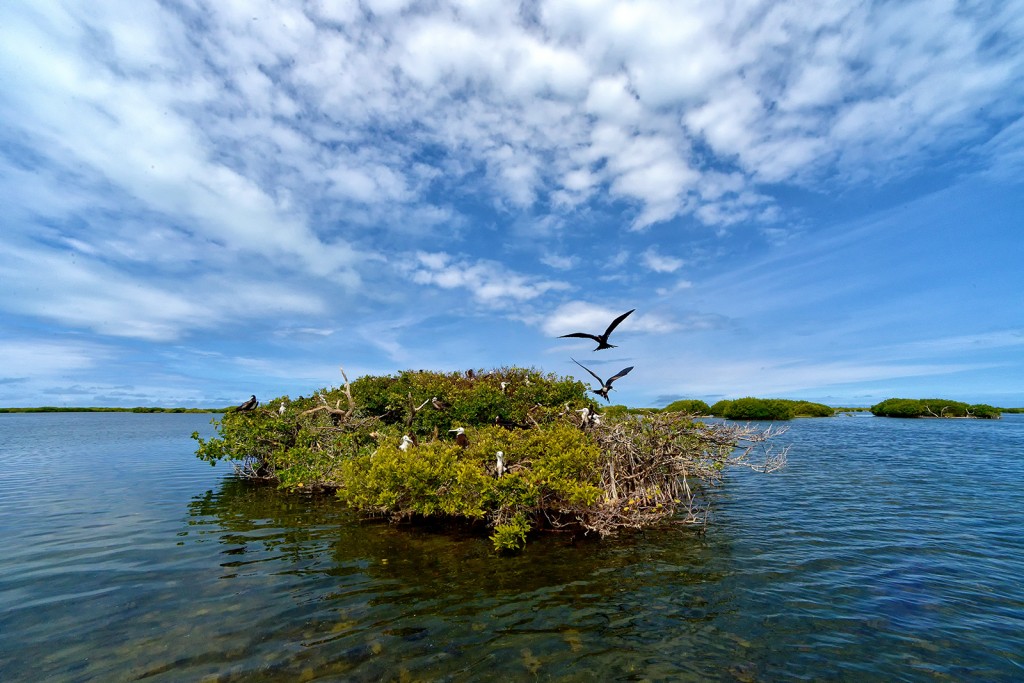
Category Archives: Birds
Bare Naked in Big Bend
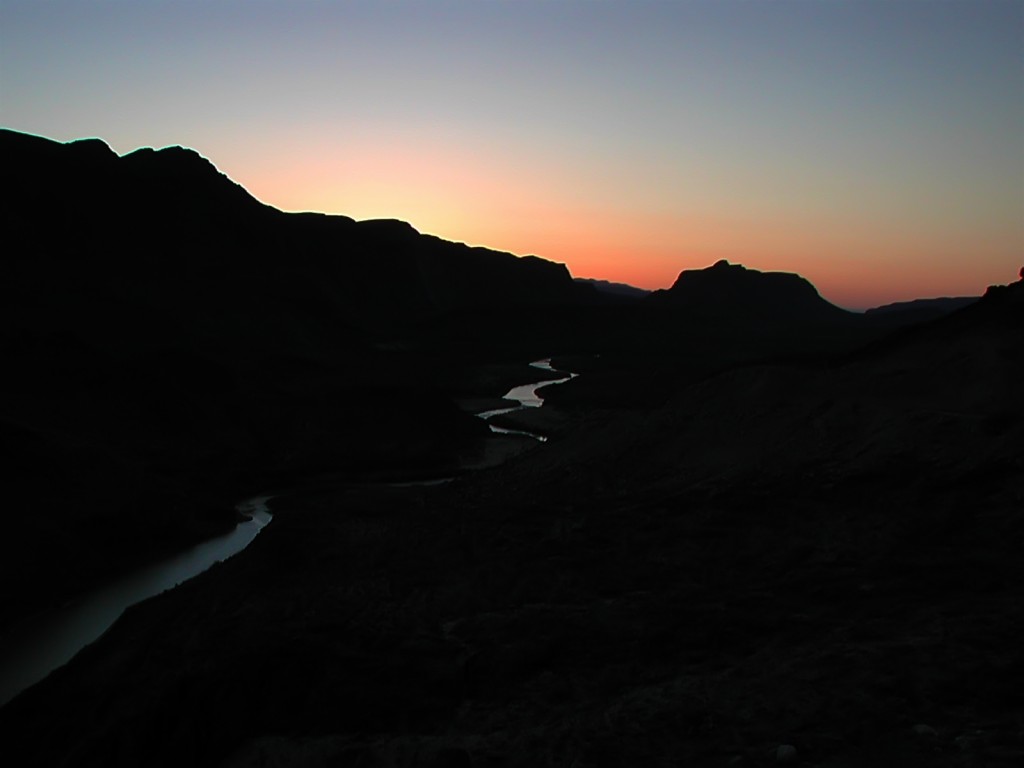
In 2011 I wrote an article for Birding magazine about bare-naked birding. The concept is simple.
That’s right; embrace “bare-naked” birding. Find a bird, gather as much information about its identity as possible without binoculars or field guides, hazard a guess as to its identity,then put glass to eye to confirm your guess. You will quickly become sensitized to the bird’s every aspect, by noting how it presents itself in life (not just the cartoonish field marks of field guides) and in the ways all aspects of a bird interrelate to form a living, breathing creature.
Ted Floyd, editor of Birding, has done yeoman’s work in promoting bare-naked birding, including completing the first bare-naked Big Day this spring in Colorado. Now the National Park Service has embraced this approach. Here is a link to the visitor’s guide for Big Bend National Park. Notice the section on page 8 about bare-naked birding and bird watching. The NPS had done a great job promoting the approach and explaining the concept, particularly for those who might be birding for the first time.
The lead story in the latest issue of the National Parks Conservation Association magazine describes birding Big Bend National Park by a first time birder. In the article the author embraces bare-naked birding, and explains how the approach helps with new birders. How nice to see a simple idea take hold!
Ted Lee Eubanks
15 July 2013
Summertime
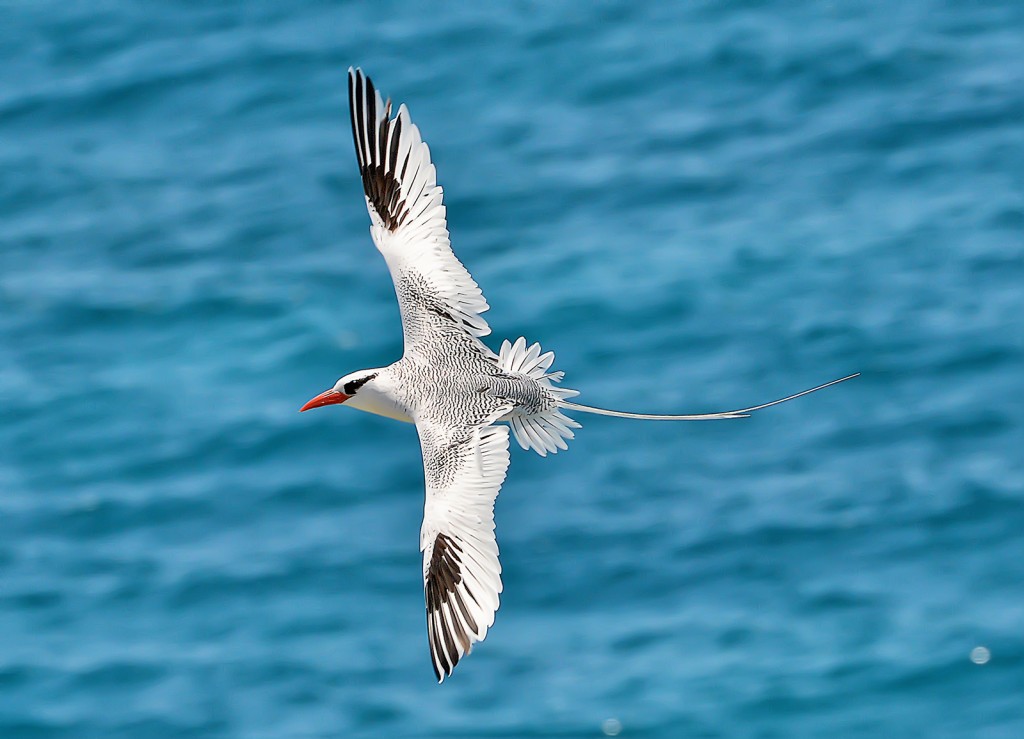
This summer I have visited Antigua & Barbuda on two occasions. The first visit (in spring, actually) consisted of a week of constant field work. I returned in late June to conduct a two-day workshop on avitourism in the region. With this workshop the project is complete.
Here are links to the various materials related to the project. We thank our client, the Environmental Awareness Group, as well as countless friends and supporters in the islands, for their help and aid in this important project.
Avitourism in Antigua & Barbuda (Final Report)
Antigua & Barbuda Photo Gallery (Images)
An article about our work in Antigua & Barbuda will be published on the Nature Travel Network blog soon, and we will post a link to the article as soon as it is live.
Ted
The Caribbean Birding Trail
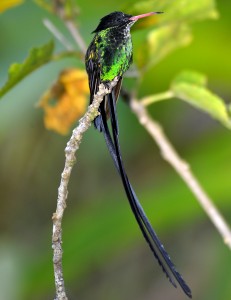
Fermata is writing interpretive plans for the first two countries on the Trail, Jamaica and the Dominican Republic. Ted Eubanks, along with Lisa Sorenson and Holly Robertson of the SCSCB, spent nearly a month in the two countries this summer. Our visits focused on five Key Biodiversity Areas (KBAs) in these two countries: Sierra Bahoruco Oriental, Sierra Bahoruco, and Parque Nactional Valle Nuevo in the DR, and the Cockpit and Portland Bight regions of Jamaica. In October the team will travel to Grenada to complete this summer’s field work.
Faces of Flight – Pajaros de la Noche

Alternative universes, however, I grasp. I hear one every night as I stare at the 3 a.m. ceiling. Crickets and cicadas underpin the more penetrating tones. A screech owl’s tremolo vibrates through my bedroom, catapulting two cats into an open window. A raccoon cracks his way through this fall’s pecan crop. Nighthawks speent, horned owls boo, and plovers recite onomatopoeias across the night sky. In late fall these familiar sounds will be joined by migrants, each marking its presence in my airspace as they drift south.
Night has always mystified us. The dark space outside the campfire’s glow is the other world, a void filled with every conceivable monster, ghost, troll, and ghoul. Now I learn from Hawking that this is simply one of an infinite number of possible universes, along with mine filled with house cats, raccoons, and owls.
To ancient man these night sounds confirmed ancient fears. Could a ghost be any more terrifying than a cadaverous barn owl hovering around a church steeple hissing its goose-pimpling shriek? Consider the names given night callers such as chuck-wills-widow, whip-poor-will, and poor-will. What did Will do to deserve this fate? Known as nightjars (their calls jar the night), the Caprimulgids include the nightjars, goatsuckers, frogmouths, potoos, and the oilbird. Birds of the day become alluring tits, warblers, and kingbirds. Birds of the night suck goats.
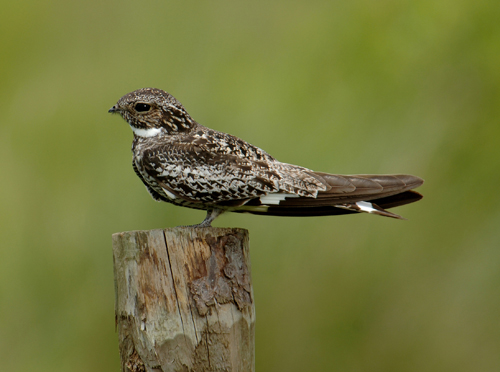
While we may not be awake to see them, the list of nocturnal animals is impressive. Owls, nightjars, rails, and night-herons are among the birds. In Galveston I have seen migrants such as Empidonax gleaning bugs from my well-lit window screens late into the night. Most land birds migrate at night, and an entire science has arisen to detect these movements through Doppler radar and night calls. Many seabirds leave their nests only at night to avoid predators. Night may be an alternative universe, but at least it is well occupied.
To birds add coyotes (until Hurricane Ike flooded our island, coyotes were frequently seen loping through the main tourist district downtown), foxes, armadillos, amphibians (the gulf coast toads that mate in my backyard pond drown out all other organic night sounds during their summer peak), and snakes. Life on this planet is 24/7, with no days off. Life is an inexorable, relentless force, sifting into every crevasse, every niche of this planet.
Most of what I hear, though, is the sound of oil. Mopeds, garbage trucks, police patrols, Boeing 737s, unmufflered street cars, churning locomotives, spewing oil refineries, petrochemical barges, and cruise ships pollute my sound scape, and shove native life and sounds into the background. I try to imagine life before Drake, before Oilcan Harry. I have read that the Greeks would not have developed their constellation-based mythology if faced with the light pollution of today’s Athens. More than one fifth of the world’s population, two thirds of the U.S. population, and one half of the European Union population have already lost naked eye visibility of the Milky Way.
What about sound pollution? Nightjars often have onomatopoetic names, but what if our forefathers had never heard them above an industrial din? Why are light and sound pollution secondary to that of water and air? Isn’t the quality of one’s life impacted by the ability to see and hear, not just being able to breathe and drink? Noise is pollution. Artificial light is pollution. We accept both by scarring them over, accepting deprivation as a cost of “modern” life. How difficult is darkness? How hard is silence?
Ten people who speak make more noise than ten thousand who are silent… Napoleon Bonaparte

Fred knew of a river nearby, and we decided to drive the road that paralleled the riverbank in hopes of seeing one of the Mexican owls. Fred had brought his 1 million candlepower spotlight that plugged into the cigarette lighter, and we puttered our way along the river while punctuating the night with intermittent bursts of blinding light. Close Encounters of a Third Kind had been released just a few years earlier, and I was certain that any spotlighted owl would be blazened in place like Richard Dreyfuss at the railroad crossing.
Our trip halted, sans owls, where the road ended at a small dam. We decided to give the light one last try, and noticed a common pauraque squatting on the road’s warm pavement. Pauraques are common in South Texas, though, and we were in search of exotica. Again Fred lit the trees, and within moments a rifle barrel thrust through his open window. We froze, so blinded by the spotlight that we could not see outside the Scout. Fred doused the beacon, and as our eyes adjusted we saw a young federale fingering the gun. Every governmental facility is guarded in Mexico, and we had unknowingly (or stupidly) wandered into a protected site (did I mention that I also carried a Bushell Spacemaster spotting scope mounted on a gunstock, and while Fred spotlighted I had been looking through optics that to this young man surely looked like a missile launcher or bazooka?).
Joined by a couple of his fellow guards, he asked what we were doing. In my broken Spanish I said that we were looking for pajaros de la noche. He asked me again, and I repeated the refrain. Without warning he and his compadres exploded in laughter, with rifles, spit, and gut-busting guffaws flying loose in every direction. We had no clue what I had said or done to set them off, but we smartly decided that laughter beat bullets.

Eventually the federales regrouped, and I tried to rephrase my earlier answer. I thumbed through my Mexican field guide, and showed the youngest of the group an illustration of an owl, el buho. The group erupted again, this time combined with looks of incredulity. Eventually he blurted out the word “whore,” and we began to get the drift.
Pajaros de la noche had an alternative meaning there – prostitute. The federales had discovered three wide-eyed gringos with binoculars and a spotlight looking for prostitutes along the river. We had stumbled into one of the alternative universes, one in which tourists search for nighttime entertainment with spotlights and a field guide. We all shook hands and enjoyed a good laugh. Fred then aimed the Scout toward the hotel, drove us back through the worm hole, and into warm beds.
Ted Lee Eubanks
20 Oct 2010